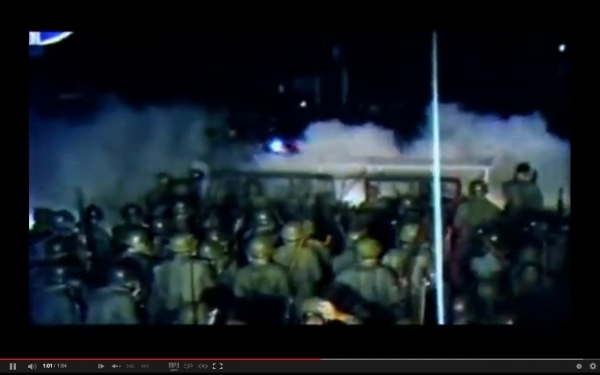BRATTLEBORO — When I was coming of age around New York City in the early 1980s, there was a local sports broadcaster whose signature phrase was, “Let's go to the videotape!”
What would follow would be a fascinating few minutes as games were reduced to their most dramatic highlights.
Going to the videotape has changed our perception of the world. In recent history, we've seen the rise of broadcast journalism, surveillance footage, and the increasing prevalence of the recorded moving image.
The Internet now delivers information more efficiently, having dispensed with the need for a broadcaster as intermediary. Channels like YouTube give us any number of ways to direct our interests and see events as they happened.
I'd like to think this phenomenon started at the 1968 Democratic National Convention in Chicago, where police and demonstrators rioted in the street.
Nearly 40 years later, both sides disagree as to who started to riot first, but one thing is clear from the video: As the police bash heads, the demonstrators chant, “The whole world is watching.”
In 1991, Rodney King received a horrific beat-down at the hands of 15 Los Angeles police officers. This clip has been viewed more than 2.3 million times on YouTube, but millions more have seen it on broadcast television.
The video served as the spark for the powder keg that was the (mostly white) Los Angeles Police Department versus the mostly black neighborhoods and resulted in the Los Angeles race riots.
“Don't taze me, bro” entered the national lexicon after University of Florida campus police subdued Andrew Meyer, a student who aggressively questioned John Kerry during the 2004 presidential campaign. The footage has had almost 10 million views on YouTube.
In November of 2011 at the University of California at Davis, police officers pepper-sprayed sitting demonstrators in the face (2.2 million views on YouTube).
And recently, NFL player Ray Rice knocked out his girlfriend and then dragged her out of an elevator (18 million views on YouTube).
* * *
Arguably, these cases would not have gotten our attention nor have even entered the zeitgeist without the video proof. Hearing such stories might cause outrage, but that outrage frequently stops with the ears. Seeing is believing. If we didn't see it, we can pretend it didn't happen.
But if we did see a story that outrages us, we share it. It becomes part of the bulletin board of the Internet, and people re-post and comment on it. It becomes a talking point for politicians or a punchline for comedians.
Way back in George Orwell's classic book 1984, we were introduced to the idea that Big Brother (a benevolent government) was watching us. Last year, a firestorm erupted over revelations that the U.S. government is listening in on our phone calls, using national security as a justification for spying on Americans.
But increasingly, it is the homemade video from “little brother” that is causing firestorms.
To adapt a phrase from Descartes: I saw the video, therefore it happened.
